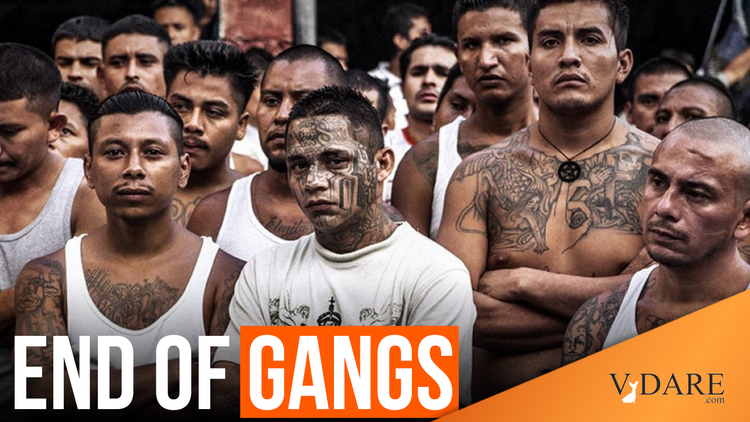
Sam Quinones: The End of Gangs
By Steve Sailer
09/03/2020
With crime going up in many cities, I wanted to call attention to the 2014 article “The End of Gangs” by Sam Quinones, author of Dreamland, about the opioids disaster, in the Pacific Standard about a sizable improvement in Southern California law enforcement that I’ve never heard anybody else mention. About 15 years ago, when William Bratton was top cop at the LAPD, So Cal police and prosecutors started going after gangs root and branch, rather than just trying to trim the top off the gang.
According to Quinones, the first reform was to get the multitudinous law enforcement agencies in Southern California to cooperate.
The second part of the new strategy was to stop focusing just on arresting the kingpins and instead round up all at once almost all the foot soldiers on RICO charges.
The third reform was to send the gang members to federal penitentiaries in distant states where their girlfriends couldn’t visit them and carry messages back to the gang members on the streets.
In April 2006, the U.S. Drug Enforcement Agency’s public affairs office in Los Angeles issued a press release under the headline “Joint Investigation Knocks-Out Two Los Angeles Area Gangs.” Federal prosecutors had indicted dozens of members of the HLP gang in Highland Park and the East Side Wilmas in Wilmington, and the press release ended with a thick list of 25 law-enforcement agencies — federal, state, and local, from the FBI and LAPD to the Covina Police Department — whose help had been “invaluable.” The media covered the press release only perfunctorily, but hidden in its 996 words was another sea change in gang enforcement.
The Racketeer Influenced and Corrupt Organizations statute was enacted by Congress in 1970 and best known for its use against Italian Mafia dons. But the RICO statute had also been used a couple of times in Los Angeles in the 1990s to go after the Mexican Mafia, a notorious California prison gang that had extended its influence to the streets, where it controlled the activities of Southern California Latino gang members. …
The HLP prosecution had begun as a drug trafficking case, but the federal prosecutor, Chris Brunwin, was also finding evidence of insurance fraud, immigrant smuggling, extortion, and witness intimidation — the sort of criminal activity that RICO was written to combat. So Brunwin expanded the case and charged the gang under the statute, netting 43 convictions.
The 2006 case against HLP was the first in Los Angeles to use RICO statutes on foot soldiers as well as gang leadership. Street gangs had previously been seen as small fry, but, by the mid-2000s, “the culture changed in terms of using this great tool,” says Jim Trusty, chief of the U.S. Justice Department’s Organized Crime and Gang section in Washington, D.C.
RICO cases also required interagency cooperation — federal budgets and wiretapping capabilities with local cops’ knowledge. Federal prosecutors and district attorneys began meeting, sharing information, and putting aside old turf rivalries. Today, federal agents and local police officers routinely work together on cases. On the day of arrests, officials — local cops, sheriffs, agents from the DEA, FBI, IRS, and others — will spend several minutes of a half-hour press conference recognizing one another’s cooperation.
Prosecuting street gangs has meant abandoning the previous focus on kingpins. “‘Cut off the head and body dies’ just isn’t true” when it comes to Southern California street gangs, says Brunwin.
It’s almost as if you don’t need to be a criminal mastermind to be head of a gang.
“You have to go after everyone — anyone who had anything to do with, supported, or touched the organization. You have to have an effect on the structure, its daily operation. The only thing that works is adopting a scorched-Earth policy.”
Since 2006, there have been more than two dozen RICO indictments in Southern California, targeting Florencia 13, Hawaiian Gardens (HG-13), Azusa 13, Five-Deuce Broadway Gangster Crips, Pueblo Bishop Bloods, and many more of the region’s most entrenched and violent gangs. Most of the indictments have dozens of defendants; the Florencia case had 102, while Hawaiian Gardens, in 2009, was one of the largest street-gang indictments in U.S. history, with 147. Some of these indictments once provided news fodder for days. Now they’re so common that they no longer earn the Los Angeles Times’ front page. A recent RICO indictment against 41 members of the El Monte Flores gang, detailing alleged extortion, drug taxation, and race-hate crimes dating back more than a decade, didn’t even warrant a press conference.
… Most of the Southern California RICO prosecutions have instead swept up large numbers of street gang members. Leaders of prison gangs like the Mexican Mafia usually aren’t even charged in these prosecutions, and are referred to as “unindicted co-conspirators.”
“In prosecuting the members, you make [prison-gang leaders] powerless,” Brunwin says. “If no one’s out there on the street doing their work, then they’re just guys in cells.”
Southern California RICO cases have sent large numbers of street-gang soldiers to prisons in places like Arkansas or Indiana, where no girlfriend is coming to visit. In California prisons, inmates usually serve only half their time before getting out on parole, but federal prison sentences are long and provide for no parole.
My vague impression is that Mexican violence tends to be more organized (e.g., cartels), black violence more disorganized (e.g., unwanted party guests). If you take the gang structure away from Mexicans, they tend to calm down.
